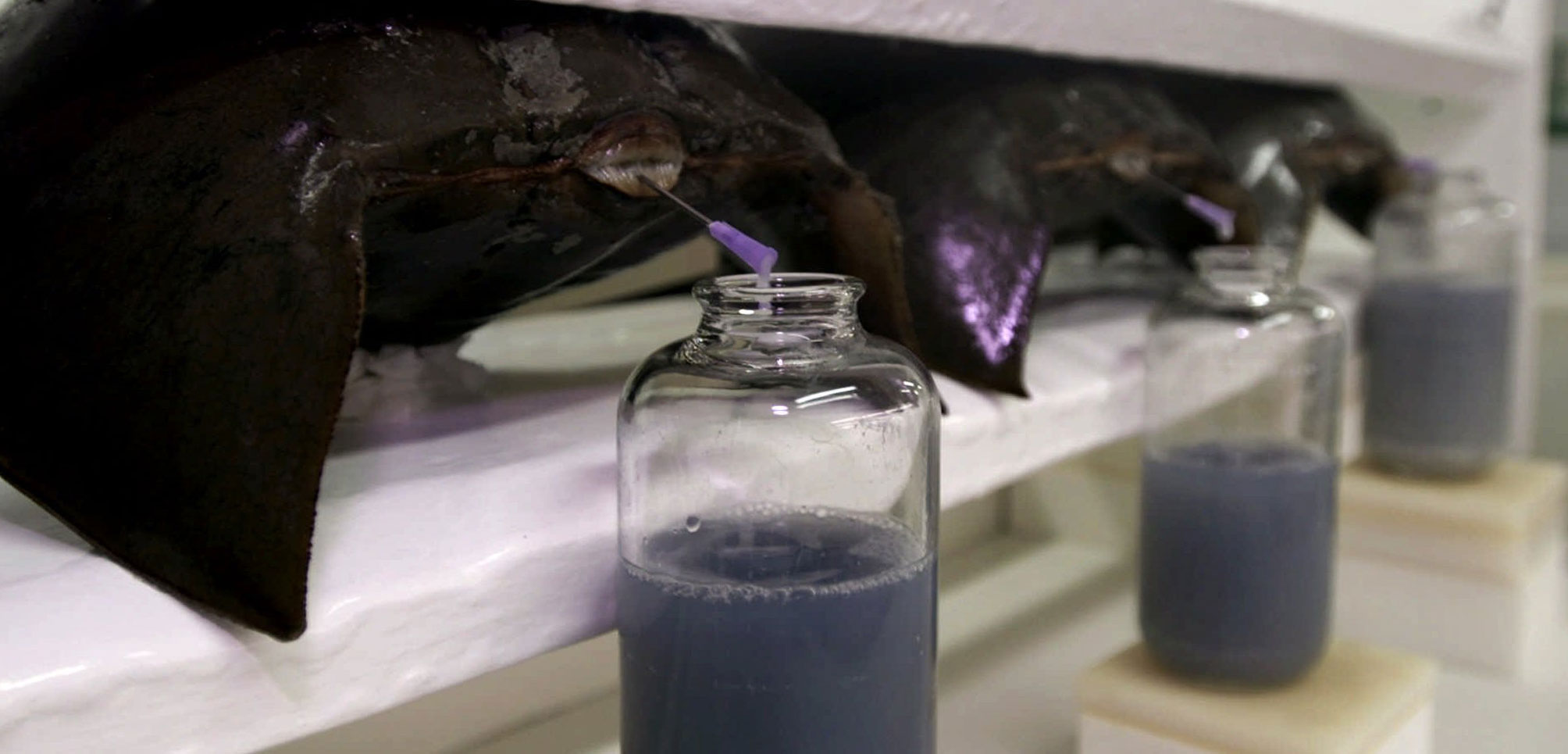Synthetic Crab Blood Is Good for the Birds
How the decision to stop harvesting horseshoe crab blood could help a whole ecosystem.
Article body copy
Pharmaceutical giant Eli Lilly and Company recently announced that it would reduce its use of limulus amebocyte lysate (LAL) by 90 percent over the next few years, the first company to phase out the naturally derived compound in favor of a synthetic alternative. Until now, LAL has been a vital component of modern medicine as it is used to detect the presence of bacterial toxins in pharmaceuticals, vaccines, and medical devices. But harvesting this life-saving compound comes at a cost. LAL is extracted from the blood of horseshoe crabs, and tens of thousands may die annually as a result.
Each year, approximately half a million Atlantic horseshoe crabs are bled by the biomedical industry to extract LAL. Scientists know alarmingly little about the ecological impacts of harvesting horseshoe crabs for medicinal purposes, says Walker Golder at the National Audubon Society. The crabs are released back to the ocean after the procedure, but experts estimate that from five to 30 percent of the crabs ultimately die. And these deaths have far-reaching consequences because dead horseshoe crabs can’t spawn.
On east coast beaches during the extreme high tides of May and early June, horseshoe crabs crawl ashore to perform an ancient spawning ritual, collectively depositing millions of eggs into holes dug in the sand. Those eggs underpin the diets of a range of coastal species.
When horseshoe crab numbers in one prominent spawning site plummeted in the late 1990s, for example, local shorebirds suffered. The crab decline was largely the result of overharvesting adult horseshoe crabs for use as bait in eel and sea snail traps. Fewer adult horseshoe crabs meant fewer eggs on the beach during spawning season. The threatened rufa red knot—which had arrived on the beach to coincide with the spawn—was deprived of a major food source. Long-term studies at this site, Delaware Bay, on the border of Delaware and New Jersey, show that without enough eggs to eat the birds will either abort their annual northward migration, die en route, or fail to successfully breed when they get to the Arctic, says Golder.
Though most of the conservation focus has been on birds, other species rely on the horseshoe crab eggs, too. Commercially and recreationally important fish, including white perch, striped bass, and weakfish (sometimes called sea trout) depend on the eggs, says Stewart Michels, the marine and shellfish program manager at the Delaware Department of Natural Resources and Environmental Control. And the nutrient-rich eggs bolster the entire estuarine ecosystem, he says. When eggs decompose, their nutrients return to the intertidal where they fuel the growth of seaweeds and sea grasses.
Strict harvest quotas implemented in 2004 have helped North America’s horseshoe crabs stabilize from their mid-90s free fall, but that recovery has stalled. In Delaware Bay, beaches that once contained as many as 120,000 horseshoe crab eggs per square meter now have roughly 6,000 to 7,000 eggs, Golder says.
Potential environmental impacts and worries about the supply chain were major reasons for switching from LAL to a synthetic alternative, says Jay Bolden, a senior scientist at Eli Lilly. In 2013, the company started plans to build a new major manufacturing plant in China. There, biomedical harvesters aren’t required to release the bled crabs back to the ocean. As a result, local horseshoe crab populations have become increasingly scarce and their blood increasingly costly to obtain. “It’s always a win when there’s a greener method that can also save us money,” says Bolden.
If other pharmaceutical companies follow Eli Lilly’s lead, the end of the horseshoe crab blood harvest could be an exciting breakthrough for shorebirds and other species that depend on the health and well-being of horseshoe crabs, Golder says.
Others are cautiously optimistic about how significant the impacts will be. While reducing the biomedical harvest will take some of the pressure off horseshoe crab populations, the invertebrates face a host of other threats that could hinder recovery, such as loss of habitat from sea level rise and coastal development at key spawning beaches, says Michael De Luca, manager of the Jacques Cousteau National Estuarine Research Reserve in Tuckerton, New Jersey.
But for now, as pharmaceutical companies look to the lab and not the beach for biomedical compounds, horseshoe crabs—and the multitude of species that depend on them—have one less threat to worry about.

